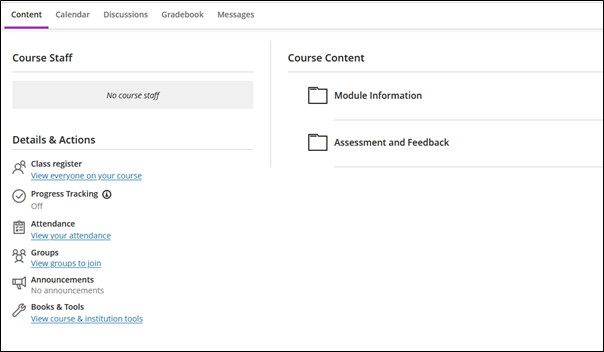
In preparation for our move to Ultra, the University’s Blackboard Required Minimum Presence has been updated and approved by Academic Enhancement Committee.
We revisit all our policies annually, but the move to Blackboard Ultra has meant that we have spent longer preparing the RMP.
The full RMP 2023-24 is now available on our webpages.
Some of the changes to the RMP are listed below:
- The Module Information folder should contain:
- Link to all Panopto recordings on a module
- Staff contact details
- An organised location for Learning Materials
- We have not specified a Learning Materials folder owing to the two-level of folder restrictions in Ultra
- Colleagues have the option to create a structure that meets their needs.
- The Assessment and Feedback folder remains the same as before and is pre-populated with:
- Guidance for students on submitting their work and finding their feedback.
- Regulation on Unacceptable Academic Practice
- Link to the Referencing and Plagiarism LibGuide
- Link to Past Exam Papers
- The Aspire Reading List link should be on the content page of the module and no more than 6 folder levels down. If you have questions about your reading lists, please contact your Subject Librarians.
We have now started our Departmental Ultra training programme and hope to see you over the coming weeks. If you can’t attend your session then we are running a series of centrally organised sessions for all staff to join.
If you’ve got any questions about Ultra, please contact the Learning and Teaching Enhancement Unit (elearning@aber.ac.uk).



